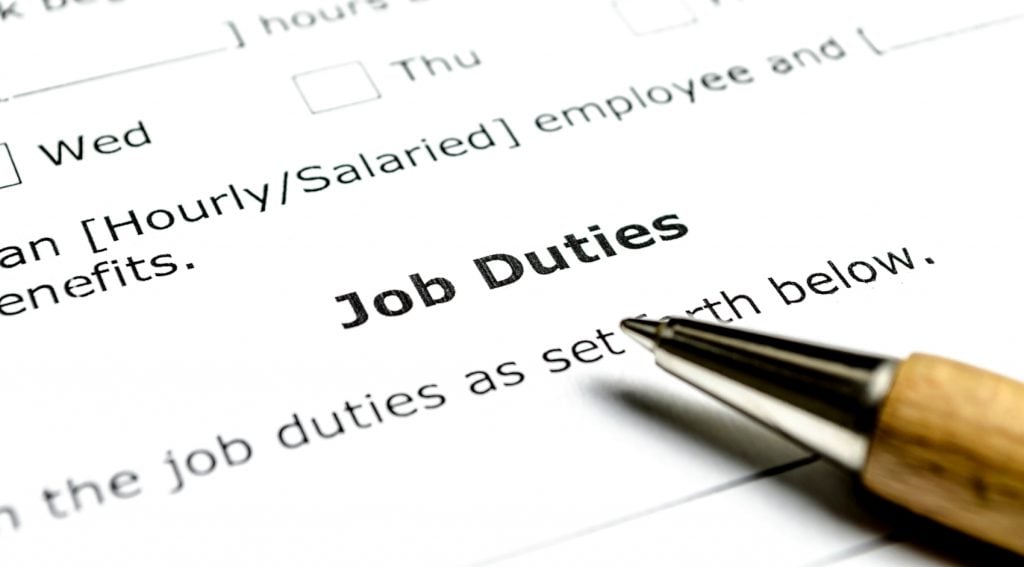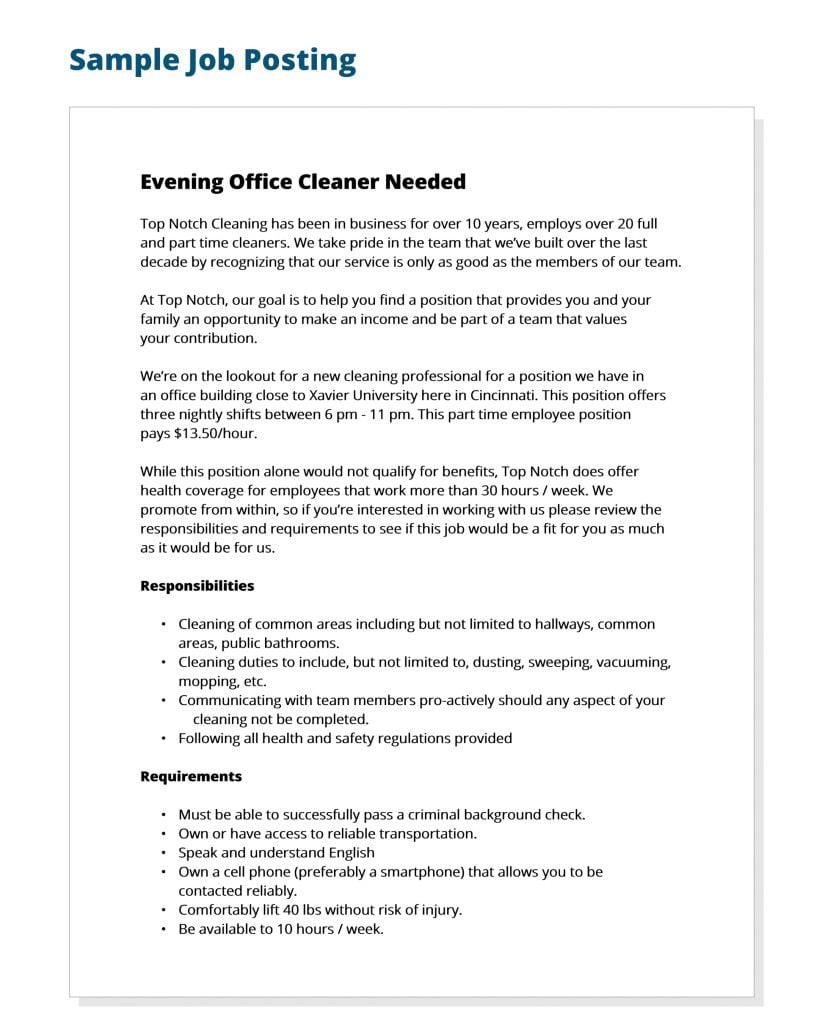The Swept Hiring Guide: Hiring for Janitorial Services

Hiring for Janitorial Services - Chapter 1 – Writing Job Descriptions
One of, if not the biggest issue plaguing the commercial janitorial industry today is employee retention. The cleaning industry dwarfs other industries’ highest turnover rate by no less than 250%. With as many as 300% of cleaners leaving their job every year.
Staggering numbers right? Well as much as we stress that you need to use every tool in your shed to keep those cleaners happy and working, we want to step back and talk about how you can improve retention as early as the hiring process. How? Glad you asked. Let’s get into it…

Let’s start with what we know;
We know that janitorial businesses are built on people. We know that you want to hire great cleaners for your business, and that great cleaners want to work for busy cleaning companies with consistent hours. So, how do you get the attention of reliable, hard-working cleaners? How do you figure out who is a good fit for your cleaning company? And very importantly, how do you make them stay with you long term? We’ve got it all figured out, and we’re ready to share what we’ve learned about hiring and keeping great cleaners.
These three cleaning company hiring tools will save you time and money by teaching you how to find the right people, and how to keep them with you for a long time:
-
Writing Job Descriptions: Make Sure the Right People Find You.
-
Interviewing the Right Way to Find the Right People.
-
Keeping Great Employees and Letting Them Find MORE Great Employees!
Tool #1: Writing Job Descriptions. Make Sure the Right People Find You.
Writing a proper job description doesn’t have to be hard. The main goal is to get attention from the right kind of people, who will fit in at your cleaning company, work hard, and eventually refer more great employees to you. Describing what the cleaning position has to offer and what makes it a good job to have is a great place to start.
Job descriptions are made up of three main elements:
-
Introduction. Three or four short paragraphs that describe your cleaning company, what your goals are, what kind of new cleaner would be a good fit, the hours, pay, location, and any employee benefits that are offered
Tip: This is a great place to let applicants know what makes being a cleaner with your company a good job—mentioning the flexibility and being able to work independently. Sell it! There are a lot of excellent candidates out there who may not have considered cleaning but would be a great fit for your team.
This part of the job description should answer these questions:
-
Why is this company any different from all the other cleaning jobs?
-
What type of job is this?
-
How much will I be paid?
-
Is there flexibility in time I can work?
-
How far away is this job from where I live now?
-
How many hours do / can I work?
-
Do they offer any type of health coverage?
-
Will any training be provided?
-
Who will I report to?
-
Will I be a contractor, or employee?
-
Responsibilities. This should be a bullet-point list outlining the kinds of tasks and duties that will be required by the cleaner on the job. This is the right place to list any communications requirements. Set the expectation early on that when everyone communicates effectively, a better job gets done and clients are happier.
This part of the job description should answer these questions:
-
What equipment do I need to know how to use?
-
What duties are expected of me?
-
Will I need to work in a team or by myself?
-
Requirements. Here’s where you list the basic job requirements. This is the right place to weed out applicants who are not a good fit for your cleaning company. Be clear what a job applicant will need to even be considered for a cleaning position.
This part of the job description should answer these questions:
-
Do I need to pass a criminal background check?
-
Do I need my own car or can I use public transportation?
-
Do I need experience?
-
Will I need a cell phone?
-
Do I need to speak English?
-
Do I need to be able to read English?
-
Will I need to be able to lift heavy things or operate any equipment?
These points and descriptions are all very well and good you say…but at the end of the day, what does it all look like?
Well, it should look something like this:

Where should I post my job descriptions?
Stat: Between 2014 to 2019 online job searching has tripled. A survey released that year showed that 65% of Americans have researched jobs on the internet.*
We recommend posting your job descriptions on a number of online websites and job banks. Many cleaning companies find a degree of success posting on social platforms like Facebook and LinkedIn.
Swept is dedicated to highlighting stories that touch everyone in the janitorial industry. Having started as a commercial cleaning company ourselves, our hearts go well beyond the janitorial software we offer. Want even more info on hiring and retention before the second chapter of the hiring guide gets released? Amazing!


